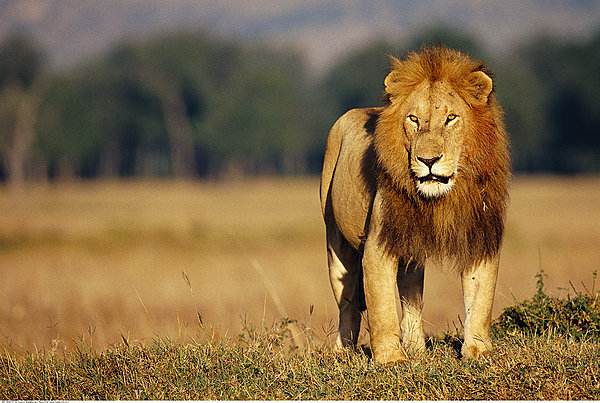Panthera leo massaicus
IUCN
LCBasic Information
Scientific classification
- name:Panthera leo massaicus
- Scientific Name:East African lion, Masai lion
- Outline:Carnivora
- Family:Schizopoda Felidae Panthera
Vital signs
- length:2.7m
- Weight:120-170kg
- lifetime:15-20 years
Feature
It is the largest subspecies of lion in existence.
Distribution and Habitat
The type specimen is found in Masai Mara National Park and is mainly distributed in Uganda, Kenya and Tanzania.
Appearance
The East African lion is a larger lion subspecies. The average total length of wild males is 2.70 meters, the average body length is 1.70 meters, and the average weight is 170kg. The average total length of wild females is 2.40 meters, the average body length is 1.53 meters, and the average weight is 124kg. The shoulder height of males is 90cm, and the shoulder height of females is 80cm. In 1997, the Kenya Wildlife Service measured several male lions (including two large sub-adult individuals), 3 mature and 1 old in Aberdares National Park. The 3 mature male lions weighed 396 pounds (179.6kg), 452 pounds (205kg) and 506 pounds (229.5kg) respectively. One old male lion weighed 500 pounds! (226kg) on an empty stomach and was shot for attacking people.
Lions have short hair and their body colors are light gray, yellow or brown. East African male lions have very thick manes, which are golden, brown, brown, black, etc. As they age, the older the male lion is, the darker the mane is. Th
Details
The Masai lion is the original subspecies of lion, commonly known as the East African lion. It is now the Nubian lion population: Panthera leo massaicus.

Lionesses in a pride may enter a mating state at any time, and the lionesses are always synchronized in this regard. Scientists have not yet fully understood the mechanism behind this strange and interesting phenomenon. However, this ensures that the children in the pride are basically the same age, and each mother can breastfeed different children. When some mothers go out hunting, the remaining mothers will be obliged to act as the nanny of all the children. In addition, the lionesses who have not given birth will also take the responsibility of taking care of the lion cubs, licking their fur and playing with them.
The biggest "natural enemy" of lions is of course modern humans who are armed to the teeth. And most of their hunting has nothing to do with survival, but just to satisfy their abnormal desire to kill. Infectious diseases that break out on the grassland can kill tens of thousands of animals in a short period of time, such as tuberculosis and feline AIDS (FIV).
Every year, Masai lions follow the great migration of wildebeests and travel back and forth between Tanzania's Serengeti National Park and Kenya's Masai Mara National Park. Many zoologists study them. Some scholars also regard the Masai lions produced in Uganda as an independent subspecies: the Ugandan subspecies (Panhtera leo nyanzae). In the past, George B. Schaller wrote a book called "The Serengeti Lion", which is a good book to understand Masai lions. There is news that the number of Serengeti Masai lions has increased from 2,000 to 3,500.
Protect wild animals and eliminate game.
Maintaining ecological balance is everyone's responsibility!








